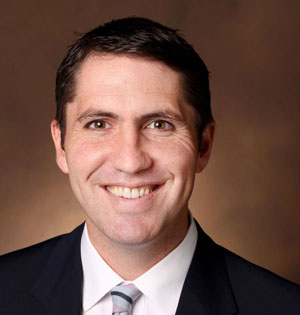by Emily Stembridge

Alexander Gelbard, MD, associate professor of Otolaryngology-Head and Neck Surgery and co-director of the Vanderbilt Complex Airway Center, recently delivered the H. Bryan Neel III, MD, PhD, distinguished research lecture at the American Academy of Otolaryngology-Head and Neck Surgery’s annual meeting.
The lecture was established in 1993 to explore new developments in biomedical science for the otolaryngologic community. Gelbard’s lecture, titled, “Idiopathic Subglottic Stenosis Arises at the Interface of Host and Pathogen,” detailed the research he and his team completed to better understand idiopathic subglottic stenosis, a rare disease that causes narrowing of the windpipe.
Gelbard’s extensive experience in otolaryngology and as the managing director of the North American Airway Collaborative (NoAAC), a multi-institutional consortium studying adult airway disease, has positioned him at the forefront of research for this disease.
“There are real barriers to translational research in rare diseases, but the last 10 years have witnessed exciting new scientific, technologic and cultural strategies to overcome these barriers,” Gelbard said.
Gelbard discussed the importance of curiosity, saying, “First and foremost, we need to ask ‘why?’ The ‘why’ is the root to understanding, and understanding is what drives treatment innovation.”
Gelbard also stressed the need to understand what improved health means to patients on an individual level. Although idiopathic subglottic stenosis is a rare disease, the strategies Gelbard and the NoAAC used to connect with patients and better understand their health goals are beneficial to all clinicians who value delivering personalized care.
Gelbard shared his team’s findings about this disease, including potential causes, triggers for flare-ups and the genomic markers that may lead to disease development. Gelbard says the NoAAC’s insights will influence future therapeutic trials for idiopathic subglottic stenosis.
“Equally important to our findings is the collaborative culture that we’ve built,” Gelbard said. “When coupled with rigorous methodology, our collaboration will help develop innovative new treatments and help patients who have been suffering.”












